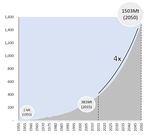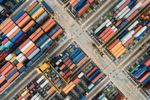RECYCLING IS NOT ENOUGH - It's time to rethink how to solve the plastic waste crisis - Global Alliance for Incinerator ...
←
→
Page content transcription
If your browser does not render page correctly, please read the page content below
GAIA January 22, 2018
RECYCLING IS NOT ENOUGH
It’s time to rethink how to solve the plastic waste crisis
By GAIA/Zero Waste Europe
In collaboration with Break Free From Plastic, Consumers Association of Penang (Malaysia), Friends of the
Earth Europe, Ecology Center (U.S.), Story of Stuff (U.S.), BaliFokus (Indonesia), China Zero Waste Alliance
China Says Enough is Enough, Already, China’s ban is driving efforts to improve
Closes its Borders to Foreign Plastic Waste recycling quality, build more domestic recycling
capacity, and create better standards in the
Until recently, countries in the Global North dealt regions that export the most plastic. However,
with their plastic waste problem by shipping the ban is also sparking negative outcomes: some
significant portions of it to China. But in January countries are threatening to increase plastic
of this year China began a new ban on plastic scrap incineration and the burden of plastic waste
import, shaking local recycling systems worldwide. processing is shifting to countries in South and
The ban has exposed global dependence on plastic Southeast Asia. As a result of extensive research
waste trade for recycling systems. In 2016, 15 with core partners around the globe, our findings
million tons of plastic was traded globally. China indicate that ultimately, none of these
was the top importer and main consumer adaptations address the elephant in the room --
worldwide, receiving 51% of all plastic waste traded. the sheer quantity of plastic being produced--
Unsurprisingly, the United States is the largest and ignore the most effective solution: to
national plastic waste exporter in the world, and the simply make less of it. Our oceans, fish
1
2nd largest plastics consumer, and the EU is the supplies, and climate depend on our ability to do
largest regional exporter. so.GAIA January 22, 2018
Evolution of annual global polymer resin and Nearly all plastics are made from fossil
fiber production fuels, and oil and gas companies see
plastics as the new frontier.
• Currently, 6% of total oil production is used
by the plastic sector, and it is estimated that
by 2050, plastic it will represent 20% use by 2050. Plastic
production is would represent 15% of global annual carbon
expected to budget (up from 1% today).3
quadruple. • In the US, 264 new plastics-related facilities
and expansions are currently planned to use
gas from the shale fracking boom.4
We Can’t Recycle Our Way Out of
Plastic Pollution
Recycling is often proposed as the primary solution
Plastic is the Problem
to the plague of plastic waste. But in reality,
Plastic, and especially single-use plastic, is an recycling will never compensate for the high use of
increasing environmental threat worldwide. plastic on its own. Recent data shows that only 9%
Though plastic has only been used widely for of all plastic ever discarded since 1950 has
a relatively short period of time1, it has been recycled, and the rest became pollution in
managed to colonize our daily lives and landfills, dumpsites, incinerator emissions, or
pollute the environment, much of it in the oceans, where it will remain for millennia.5 Europe
form of packaging. The plastic trend is far has the highest collection rates of plastics for
from over—in fact, plastics producers are recycling in the world, at 29.7%; China’s rate is
planning on flooding the markets with a 22.8%; while the U.S. only collects 9.5% of post-
massive scale-up over the coming decades. consumer plastic for recycling.6This means that in
the best case scenario over two-thirds of the
plastics we discard currently fall out of the so-called
Plastic Production Explosion Circular Economy, ending up in incinerators,
landfills, cement kilns, dumpsites, oceans or the
• Global annual production increased from 2
environment. Despite some efforts to curb plastic
million tons in 1950 to 381 million tons in
pollution through mechanisms like bans and fees,
2015: 2.5 times the compound annual growth
overall, governments have been unable to staunch
rate of the global gross domestic product for
the increasing flow of plastic. Companies are not
that period.2
only designing plastic to be difficult or impossible
• Projections are to further increase the growth to recycle, but the overwhelming flood of new
rate: by 2050, it is estimated that the total plastic into the market thwarts any chance of
volume of plastic ever produced will reach recycling keeping up.
34,000 million tons (Mt)—over four times
what has been produced so far.
2GAIA January 22, 2018
Limits to Plastic Recycling
Only 9% of all plastic ever
• Companies are choosing to use lighter weight
plastic, or a combination of materials, colors discarded since 1950 has been
and additives that are hard to recycle, or are recycled, and the rest became
simply not recyclable at all.
pollution…
• With the best available recycling technology
for the current mix of plastics used, the
maximum recycling level would only be
The Human Cost of the Global Plastic
somewhere between 36% and 53%.7
Waste Trade
• Even if the global recycling rate were to reach
the theoretical best possible rate of 53% by The livelihoods of millions of people worldwide
2050, projections for overall increase in depend on collection and recycling systems.
plastic production mean the amount of non- Wealthier societies like the US and Europe tend to
recycled plastic polluting the environment recycle more of their own high-quality plastic
would still double.8 domestically and export low-worth plastics to Asia,
burdening these countries with the occupational
New Plastic Kills Recycled Plastic and environmental health hazards that arise from
Economy processing these materials. In general, recycling
operations are challenged by low plastic quality,
• Overproduction of virgin plastic leads to low
competition against cheap virgin plastic, and lack of
market prices, particularly as prices don’t
transparency and accountability for exporters and
factor in the externalities of plastic
plastic manufacturers.
production, such as climate impacts and
pollution from oil and gas extraction.
Toxicity and Environmental Injustice
• Low virgin plastic prices outcompete recycled
plastic, and there are no mechanisms in place • Thousands of chemicals are added to plastics
to ensure manufacturers will use recycled to deliver different characteristics, such as
plastic content in their products. stability, flexibility, and so on. Some are known
toxics, risking recycling workers’ health.
Bad waste management undermines
recycling • In some countries, collection and processing of
low-grade plastics for recycling is carried out
• Incineration, “waste-to-energy,” and “plastic- largely by the informal sector (often called
to-fuel” methods compete with recycling, and wastepickers and recyclers). Such workers
undermine plastic reduction efforts. These often face no labor or environmental
forms of waste treatment are a one-way use of protections and usually only have access to
fossil fuels and plastic, whereas any recycling poor quality equipment. This leads to pollution
that does happen replaces virgin plastic and dangerous conditions.
production.
3GAIA January 22, 2018
other linear methods. Not only do these
approaches pose a danger to human health and
the environment, they enable further fossil
fuel extraction to produce even more plastics.
Underlying all these possibilities is the specter
of much more virgin plastic flooding the global
marketplace.
Without significant
Transparency problems and double
standards in shipping waste intervention, by 2050 plastic
• Exporters often do not know the real fate of production will represent 15%
the materials they ship or have information on
of the global carbon budget.
the environmental or social performance of
reprocessing facilities.
• Although conditions are improving in some
Given the scale of the global plastic waste crisis
importing countries, when the quality of plastic
and the immediate issues resulting from China’s
shipped from global north countries to
ban, bold and innovative thinking is required. We
developing nations is low, some imported
must acknowledge that recycling will never be
plastics will end up in dumpsites, landfills or
able to absorb the existing and expanding
incinerators or “waste-to-energy” plants, or
production of plastics, and while efforts to
used as fuel in cement kilns and boilers,
improve recycling are necessary, the primary
polluting regions’ air and water.
emphasis must be on large scale reduction of
• Despite this, many global north countries still plastic in the marketplace. The chart on page 5
count exports towards recycling targets, and represents two very different realities: the “best
the lack of transparency in shipping has even case scenario” which illustrates some of the
led to shipment of mixed waste misrepresented solutions necessary to prevent plastic pollution,
as recyclables.9 and the worst outcome if we pursue business as
usual.
An Uncertain Future for Plastics
Recycling: Opportunities and Threats
Exporting countries most affected by China’s
recent ban are already pursuing alternatives that
would create even more plastic pollution, such as
burning previously exported plastics in
incinerators and cement kilns, shifting
recyclables exports to Southeast Asia, and
investing in plastic-to-fuel, plastic roads, and
4The Tale of Two Plastic Futures
GAIA January 22, 2018
Best Case Scenario Worst Case Scenario
1. Overall virgin plastic production is 1. Virgin plastic production exponentially
greatly reduced increases
• Goods in marketplace are accessible to the • Retailers increase the amount of plastic packaged
public and industrial consumers without single goods in the marketplace, and consumers have few
use plastic. opportunities to choose products without plastic
packaging.
• All plastic in the marketplace is designed to be
nontoxic and reusable, with very limited • Companies exponentially increase the production
exceptions. of no-value plastic designed with additives, mixed
materials, and other components that impede
recycling.
2. Significant measures are taken to 2. Lack of accountability and poor waste
reduce pollution caused by existing plastic management worsens pollution
• Incineration in any form is discredited as a • There is increased reliance on incineration, plastic-
plastic waste management technique. to-fuel, and other false solutions, causing air and
land pollution.
• Corporate liability policies hold companies
accountable for the pollution they have created • Without fear of accountability, companies continue
and the environmental and human health harm to pollute countries with increasing amounts of
they cause. single-use, virgin plastic packaging.
3. Any continued plastic recycling meets 3. Burden of plastic recycling processing
higher environmental and social standards shifts to countries in Southeast Asia and other
regions
• Wastepickers and informal recyclers have the
power to improve materials management, and to • Companies continue to make low-value materials
integrate into changing systems such as future that fail to support wastepicker livelihoods and
delivery, with training for new roles. expose them to harm. New infrastructure
investments displace wastepickers, destroying
• To prevent countries from being a dumping livelihoods.
ground for poorly sorted waste and unrecyclable
plastics, plastic waste exports are restricted and • Plastic waste exports continue, creating new
ultimately eliminated, and domestic recycling dumping grounds in other parts of Asia like
capacity increases. Vietnam, Cambodia, and Indonesia and exposing
those countries to human health impacts and
environmental degradation.
5GAIA January 22, 2018
China’s Wake-up Call businesses and citizens are finding their own
solutions to plastic overproduction, evidenced by
China’s ban could prove to be a turning point in
the success of bans and fees on plastic bags and
the history of plastics, either for the better if we
styrofoam, the rise of reusable bottles and other
act wisely, or with devastating consequences if
items, and innovative redesign of products and
we do not. While the threat that plastic poses to
packaging. The message that China is sending us
the ocean is well known, the plastic pollution
is that we can’t continue to ship our plastic
problem is also inexorably bound to the fate of
problem away, committing environmental
our climate and threatens irreversible
injustice in the process. By confronting industry’s
contamination of seafood and drinking water
plastic addiction without using recycling as a
(through microplastics), making the crisis an
crutch, we can work towards meaningful plastics
even greater priority. Already, some city
reduction.
governments, policy leaders,
Explore the map of plastic recycling flows between countries here:
http://tabsoft.co/2mSiiW3
For more information, go to no-burn.org.
CHINA ZERO WASTE ALLIANCE
6GAIA January 22, 2018
References
1Geyer, R., Jambeck, J. and Lavender, K. 2017. Production, use, and fate of all plastics ever made. Science Advances 3:7. [DOI:
10.1126/sciadv.1700782].
2http://www.plasticseurope.org/documents/document/20161014113313-plastics_the_facts_2016_final_version.pdf
3The carbon budget refers to the amount of greenhouse gases admissible to emit in order to maintain the global temperature
increase up to 2°C by 2100. Source: World Economic Forum, Ellen MacArthur Foundation and McKinsey & Company. 2016.
The New Plastics Economy — Rethinking the future of plastics.
4Center for International Environmental Law. 2017. How Fracked Gas, Cheap Oil, and Unburnable Coal are Driving the
Plastics Boom.
5Geyer, R., Jambeck, J. and Lavender, K. 2017.
6Europe: Plastics Europe and EPRO. Plastics - the Facts 2016. An analysis of European plastics production, demand and waste
data. China: Ministry of Commerce: China Renewable Resource Recycling Industry Development Report 2017 (Abstract) and
China's waste plastics industry in 2015 Overview and trends, referenced in http://www.sohu.com/a/138163695_270404 and http://
www.chyxx.com/industry/201511/358086.html US: Environmental Protection Agency. 2016. Advancing Sustainable Materials
Management: 2014 Tables and Figures Assessing Trends in Material Generation, Recycling, Composting, Combustion with
Energy Recovery and Landfilling in the United States.
7Denkstatt, The potential for plastic packaging to contribute to a circular and resource-efficient economy (Identiplast, 2015).
8Calculation made taking global plastic production by 2015 and projections for 2050, and comparing with a 18% recycling rate
by 2015 and a 53% recycling rate by 2050.
9 https://www.rappler.com/newsbreak/iq/188654-timeline-canada-garbage-philippines, accessed January 12, 2018.
7You can also read






















































